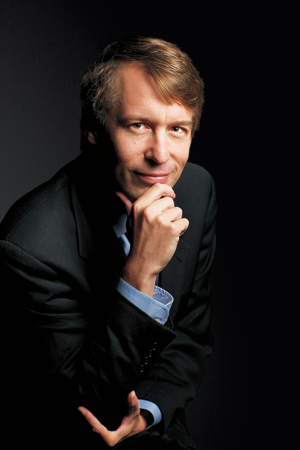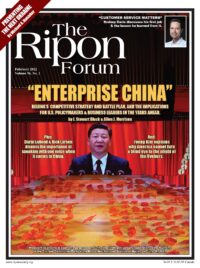
From hosting the Winter Olympics to containing a pandemic that has crippled other nations around the globe, it might seem that China is on top of the world. Indeed, this is precisely the image Xi Jinping seeks to project – both at home and abroad.
But beneath the surface, China faces serious problems.
Politically, China is atrophying. The reform era is over. Key elements that underlay China’s post-1978 boom – a more relaxed grip by Party authorities, space for technocratic governance, openness towards private enterprise – are giving way. Under Xi, China is sliding back towards single-man rule, stifling ideological orthodoxy, with Maoist controls over state and society alike.
This is not a recipe for success. The last time China downed this particular cocktail, in the 1950s and 1960s, it resulted in decades of instability and erratic policymaking. Space for meaningful discussion vanished. Channels of information to the top shriveled. Yes-men proliferated. Potential successors rose, fell … and were beaten to death (Liu Shaoqi), or died in mysterious plane crashes (Lin Biao). Grandiose visions embraced by an aging great leader and enthusiastically pushed by sycophantic underlings spun out into catastrophic economic failure (as with the Great Leap Forward) or horrific political strife (such as the Cultural Revolution).
Economically, China’s go-go years are over. Annual 10% GDP growth rates are a thing of the past. Ahead lies an era of much slower growth. And Beijing faces the urgent need to address a host of problems that have accumulated during the boom era. A yawning gap exists between haves and have-nots that puts China alongside the United States as one of the most unequal societies on earth. And their economy has become severely distorted by Beijing’s addiction to state-owned enterprises as a tool to control growth, and infrastructure development as the fuel to drive it.
Economically, China’s go-go years are over. Annual 10% GDP growth rates are a thing of the past. And Beijing faces the urgent need to address a host of problems that have accumulated during the boom era.
Demographically, China is entering an era of rapid aging. Just like its East Asian neighbors, China’s birth rates are plunging to among the lowest in the world. China’s working age population peaked in 2011. It has steadily declined since. The same will soon be true for the population at large, perhaps as early as next year. The percentage of the population over 65 years old will surge, from roughly 12% now to around a third by mid-century. Hard and painful choices lie ahead – raising retirement ages, cutting pensions, addressing labor shortages, and providing effective care to hundreds of millions of elderly citizens, many of whom are locked in rural poverty.
None of these have easy solutions. All will hobble China’s 21st century rise.
Naturally, Beijing’s leaders aren’t dumb. They openly recognize the latter two challenges. And China does not lack for impressively titled policies and proposals to address them. Back in 2013, observers swooned as Party declared that the market would play a “decisive role” in future reform efforts. In 2021, markets trembled — and the private tutoring industry imploded — as Beijing launched a blitz to implement Xi’s “common prosperity” drive aimed at tackling social inequalities and barriers discouraging parents from having children.
But China’s own political realities increasingly undermine such efforts. Beijing’s reflexive desire for central control has systematically stymied meaningful economic reform over the past decade. And the new focus by Party leaders on the demographics of an aging China shows early signs of veering into a misguided pro-natalist strategy akin to that pursued by Ceausescu in Romania (and amounting to a 180-degree reversal of China’s former anti-natalist one-child policy), with similarly disastrous social results.
Demographically, China is entering an era of rapid aging. The percentage of the population over 65 years old will surge, from roughly 12% now to around a third by mid-century.
What does all this mean for America?
The 21st century is often framed as a kind of decades-long Olympic contest between America and China for influence on the world stage.
But a far more important competition is playing out within each country, where both China and America are in a qualifying match against their own respective domestic demons – historical, political, and social.
And in the long-term, the most threatening thing for Beijing’s autocratic rulers is not the prospect of some freakishly cartoon-like version of Uncle Sam emerging victorious from America’s semi-finals – muttering vapid slogans about America first, undermining our own democratic institutions, tacking towards isolationism, and fanning the flames of ethnonationalism as an electoral tool to rile populist anger.
Indeed, from the perspective of Beijing’s autocratic rulers – as well as those in Moscow and Tehran – that result is actually desirable. That weakens America at home, strengthens Xi’s hand in China, and divides us from our allies.
Abandoning our own historic commitment to liberal democracy – whether on the right, the left, or both – in favor of an increasingly narrowly defined concept of “America” founded on blood, soil, and ethnic identity – that is how the United States “loses” not only the 21st century, but its own soul.
China is on track to lose its own contest, against its own domestic demons, with tragic results.
Will America as well?
Carl Minzner is a Senior Fellow for China Studies at the Council on Foreign Relations, and a Professor of Law at Fordham Law School. He is the author of End of an Era: How China’s Authoritarian Revival is Undermining Its Rise (Oxford University Press, 2018; paperback, 2019)




